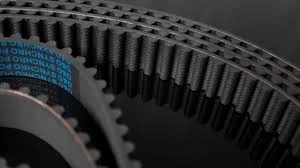- Arabic
- French
- Russian
- Spanish
- Portuguese
- Turkish
- Armenian
- English
- Albanian
- Amharic
- Azerbaijani
- Basque
- Belarusian
- Bengali
- Bosnian
- Bulgarian
- Catalan
- Cebuano
- Corsican
- Croatian
- Czech
- Danish
- Dutch
- Afrikaans
- Esperanto
- Estonian
- Finnish
- Frisian
- Galician
- Georgian
- German
- Greek
- Gujarati
- Haitian Creole
- hausa
- hawaiian
- Hebrew
- Hindi
- Miao
- Hungarian
- Icelandic
- igbo
- Indonesian
- irish
- Italian
- Japanese
- Javanese
- Kannada
- kazakh
- Khmer
- Rwandese
- Korean
- Kurdish
- Kyrgyz
- Lao
- Latin
- Latvian
- Lithuanian
- Luxembourgish
- Macedonian
- Malgashi
- Malay
- Malayalam
- Maltese
- Maori
- Marathi
- Mongolian
- Myanmar
- Nepali
- Norwegian
- Norwegian
- Occitan
- Pashto
- Persian
- Polish
- Punjabi
- Romanian
- Samoan
- Scottish Gaelic
- Serbian
- Sesotho
- Shona
- Sindhi
- Sinhala
- Slovak
- Slovenian
- Somali
- Sundanese
- Swahili
- Swedish
- Tagalog
- Tajik
- Tamil
- Tatar
- Telugu
- Thai
- Turkmen
- Ukrainian
- Urdu
- Uighur
- Uzbek
- Vietnamese
- Welsh
- Bantu
- Yiddish
- Yoruba
- Zulu
Dec . 16, 2024 10:13 Back to list
Understanding the Importance of Timing Belts in Vehicle Maintenance and Performance
Understanding Vehicle Timing Belts The Heart of Your Engine
When it comes to the intricate machinery of your vehicle, few components are as critical as the timing belt. This vital part ensures that your engine’s components operate in sync, ultimately affecting the performance, efficiency, and longevity of your vehicle. In this article, we will explore the function of the timing belt, signs of wear, maintenance tips, and the consequences of neglect.
What is a Timing Belt?
The timing belt is a rubber band-like component that connects the crankshaft and the camshaft in an internal combustion engine. Its primary role is to synchronize the rotation of these two crucial parts, ensuring that the engine’s valves open and close at the proper times during each cylinder’s intake and exhaust strokes. This precise timing is essential for your engine to run smoothly and efficiently.
Importance of the Timing Belt
The timing belt's significance cannot be overstated. If the timing belt fails, it can lead to catastrophic engine problems. In interference engines, for example, a broken timing belt can cause the pistons to collide with the open valves, resulting in severe damage that can be costly to repair. Regular maintenance and timely replacement of the timing belt are crucial to prevent such expensive repairs.
Signs of a Worn Timing Belt
Being aware of the warning signs of a worn or failing timing belt is essential for vehicle owners. Here are some key indicators to watch for
1. Unusual Noises A failing timing belt may produce a high-pitched squealing or grinding noise. This could indicate that the belt is loose or has deteriorated, causing it to slip over the gears. 2. Engine Misfires If the timing belt is not maintaining proper timing, you might experience engine misfires or decreased performance. This can lead to reduced power and poor acceleration.
3. Oil Leaks A worn timing belt can lead to oil leaks around the crankshaft or camshaft seals, which is a sign that the belt may need replacement.
4. Check Engine Light If your check engine light comes on, it could be an indication of various issues within your engine, including timing belt problems. It's advisable to have it diagnosed promptly.
vehicle timing belt

5. Age and Mileage Timing belts typically need replacement every 60,000 to 100,000 miles, depending on the manufacturer’s recommendations. Regularly referred to as a part of preventive maintenance, if your vehicle is approaching this mileage, it’s time to consider replacement even if there are no symptoms.
Maintenance and Replacement
Maintaining your timing belt is crucial to ensuring the longevity and reliability of your vehicle. Here are some key maintenance tips
- Follow Manufacturer Guidelines Always rely on your vehicle’s owner manual for specific recommendations regarding the timing belt replacement interval and other maintenance schedules.
- Regular Inspections During routine maintenance services, mechanics should inspect the timing belt for signs of wear, such as cracks, fraying, or discoloration.
- Replacement with Other Components When having the timing belt replaced, it is often advisable to replace other components such as the water pump, tensioners, and pulleys in the same service. This preventive measure can save you time and money in the long run.
Consequences of Neglect
Neglecting the maintenance of your timing belt can lead to severe consequences. A sudden failure can cause engine damage that may require a complete engine rebuild or replacement, which can be incredibly costly. In addition, it can significantly affect your vehicle’s performance and efficiency, leading to decreased fuel economy and increased emissions.
Conclusion
The timing belt is a critical component of your vehicle’s engine, ensuring that everything runs smoothly in perfect synchronization. By understanding its importance, recognizing the signs of wear, and adhering to proper maintenance practices, you can ensure your vehicle operates at its best, potentially saving yourself from costly repairs in the future. Regular check-ups and timely replacements not only safeguard your engine but also provide peace of mind on the road. Remember, an ounce of prevention is worth a pound of cure when it comes to the heart of your engine – the timing belt.
-
Upgrade Power Steering Pump Belt for Smooth, Quiet Operation
NewsAug.27,2025
-
Precision Timing Belt & Chain: Engine Performance & Durability
NewsAug.26,2025
-
Precision Lathe Drive Belts: Durable & Reliable Performance
NewsAug.25,2025
-
84.5 Serpentine Belt: Durable & Precision Fit for Your Engine
NewsAug.24,2025
-
Premium Ribbed Drive Belts for Quiet Power Transmission
NewsAug.23,2025
-
High-Performance Vehicle Timing Belt for Engine Precision
NewsAug.22,2025

